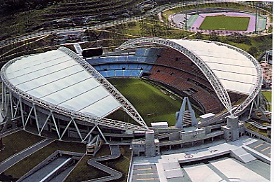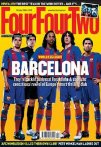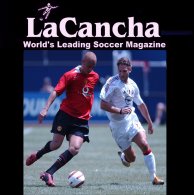 |
| Posters | Videos | CD-ROMS | Games | Soccer Mags | Books | Products! |
 |
| DAEGU |
| Korea's Textile and Fashion
Centre |
Daegu is Korea's third largest city, after Seoul and Busan, with a population of 2.5 million. Located in the south-west of the Korean peninsula, Daegu is the leading industrial base for textiles and fashions. Deagu's achievements in environmental awareness were recognised when the city was nominated as a Solar City by the International Energy Agency.
An historical centre of both Buddhist and Confucian culture, Daegu is home to the Hyanggo Confucian Academy, which was established during the Joseon Dynasty.
About 60 km to the west in the Haeinsa temple, home to the famous Tripitaka Koreana, the world's most comprehensive carvings of the Buddhist Tripitaka canon. Carved on almost 84,000 wood blocks, the project took fifteen years to complete, between 1236 to 1251. Today, the blocks are perfectly preserved in the temple and play an important role in international Buddhist scholarship.
Daegu is the centre of Korea's resurgent fashion industry and is known locally as the "Korean Milan". The city is a bustling metropolitan centre that merges traditional and modern Korea. The oriental medicine markets of Yakjeon street maintain the traditions of the herb markets of the Joseon dynasty while Dongseong Street teems with restaurants, cafés, pubs, fashion malls, hair salons, large bookshops and theatres.
Daegu's textile industry accounts for 21% of Korea's total textile manufacturers and produces 26% of the nation's textile exports. With the fabric industry, Daegu is home to 62% of the nation's fabric manufacturers and produces 42% of Korea's fabric exports. Daegu's synthetic fabric production and export complex is the largest of its kind in the world. Building on these strengths, Daegu is currently working to establish itself as one of Asia's top fashion centres and hopes to compete on the global stage within the next few years.
Daegu was one of the three Korean cities that played host to the Confederations Cup in May 2001. The competition opened in the brand new Daegu Stadium on May 30. The stadium itself had opened only 10 days previously with a friendly match between Santos of Brazil and Korea's Songnam Ilhwa. Daegu World Cup stadium was the third of Korea's ten new stadia.
Information
Website: http://worldcup.daegu.go.kr
Tel: 82-53-429-2620~2624
Fax: 82-53-429~2629
| DAEGU WORLD CUP STADIUM |
 |
| The Daegu World Cup Stadium, the largest in Korea, blends in well with its natural surroundings. Its roof captures the linear beauty of a traditional Korean house |
| Key Facts Name: Daegu World Cup Stadium Type: Multi-Purpose Opened: May 20 2001 Cost: W289.6 billion Total Capacity: 65,857 Spectator seats: Under cover: 48,734 Open: 17,123 VIP seats: 1,237 VIP Boxes: 12 ( 96 seats) Disabled seats: 192 |
| Pitch Size: 109m x 72m Spectator Parking: 3,010 Distances to Stadium From city centre: 8.5 km From Daegu International Airport 8 km From railway station: 6 km From bus terminal: 6 km From subway station: 1.6 km Press Facilities Press seats: 400 Seats with desk and telephone: 400 Space for commentators: 450 Space for photographers: 100 |
Source: FIFA
 |
 |
 |
 |
 |
 |
| Videos | New Posters | CALENDARS | Books | Magazines |
| VISIT THE WORLD'S LEADING SOCCER MAGAZINE |
| Posters | Videos | Books | Games | Mags | New Products |
| MAIN LINKS** CLUBS (Intl.) COUNTRIES PLAYERS WOMEN YOUTH COLLEGE HIGH SCHOOL SOCCERMALL |
 |
|